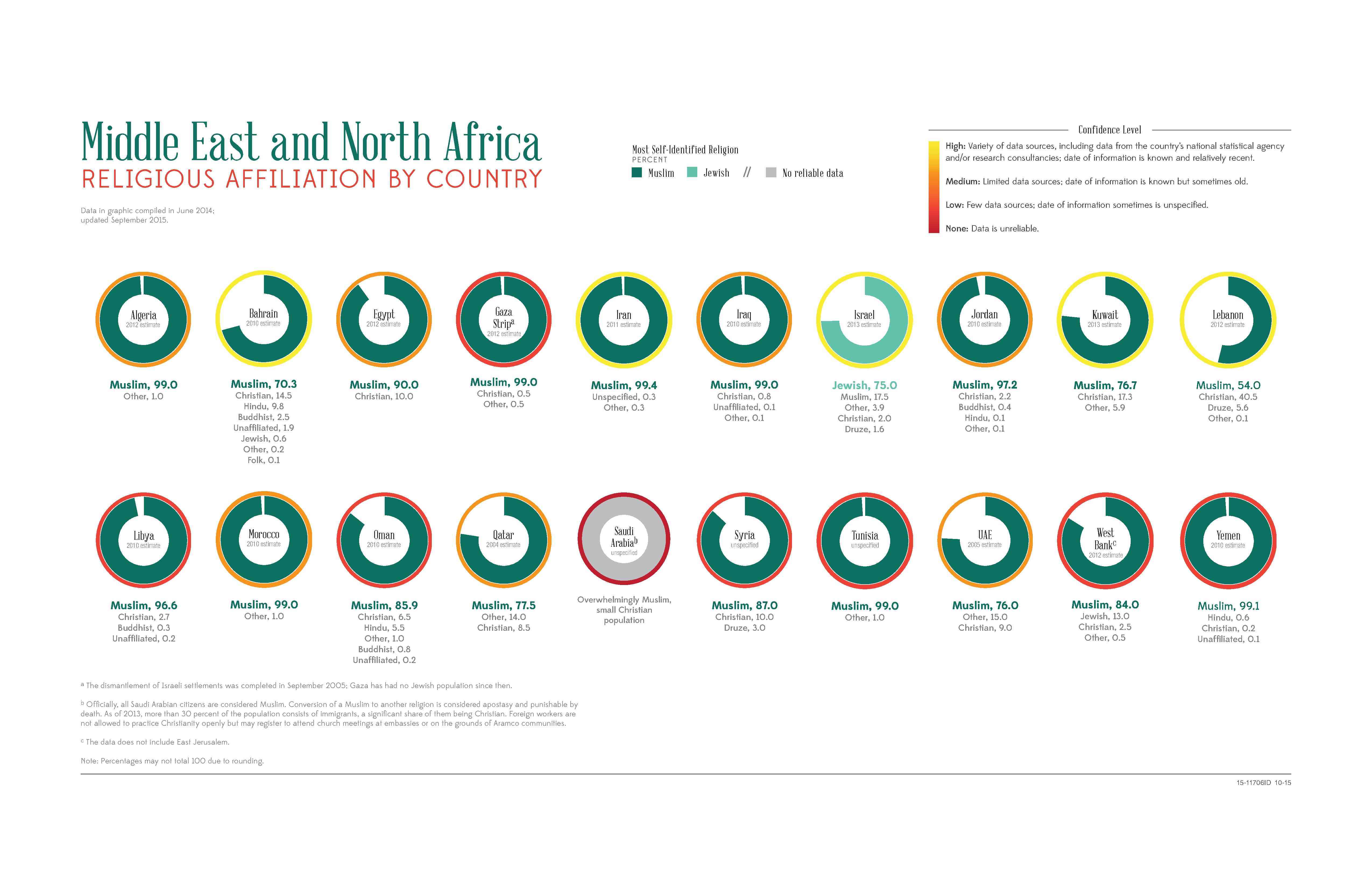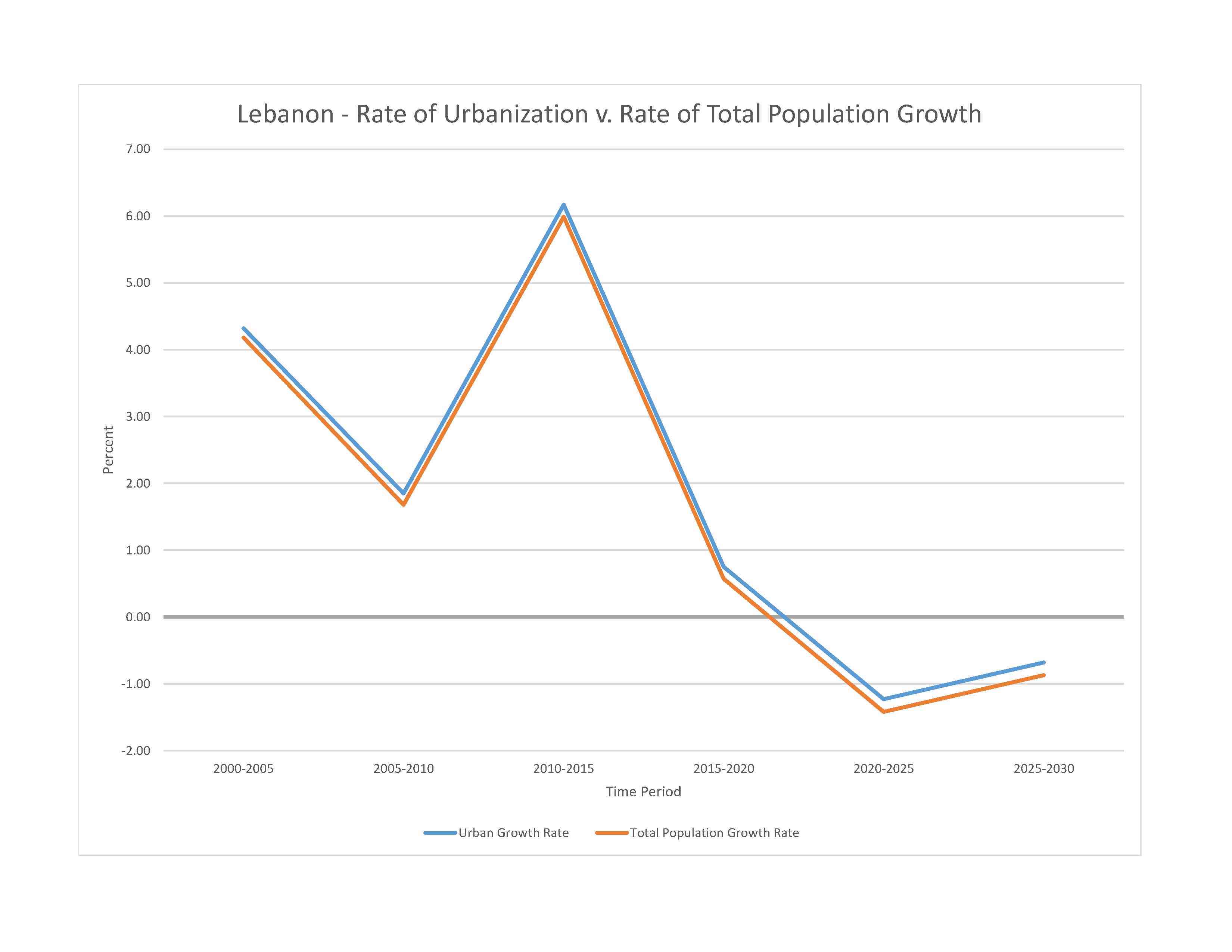
5,331,203 (2023 est.)
noun: Lebanese (singular and plural)
adjective: Lebanese
Arab 95%, Armenian 4%, other 1%
note: many Christian Lebanese do not identify as Arab but rather as descendants of the ancient Canaanites and prefer to be called Phoenicians
Arabic (official), French, English, Armenian
major-language sample(s):
كتاب حقائق العالم، المصدر الذي لا يمكن الاستغناء عنه للمعلومات الأساسية (Arabic)
The World Factbook, une source indispensable d'informations de base. (French)
The World Factbook, the indispensable source for basic information.
Arabic audio sample:
French audio sample:
Muslim 67.8% (31.9% Sunni, 31.2% Shia, smaller percentages of Alawites and Ismailis), Christian 32.4% (Maronite Catholics are the largest Christian group), Druze 4.5%, very small numbers of Jews, Baha'is, Buddhists, and Hindus (2020 est.)
note: data represent the religious affiliation of the citizen population (data do not include Lebanon's sizable Syrian and Palestinian refugee populations); 18 religious sects recognized

0-14 years: 19.21% (male 524,172/female 500,185)
15-64 years: 71.69% (male 1,929,150/female 1,892,806)
65 years and over: 9.1% (2023 est.) (male 208,436/female 276,454)
total dependency ratio: 59.3
youth dependency ratio: 44
elderly dependency ratio: 15.3
potential support ratio: 6.5 (2021 est.)
total: 35.8 years (2023 est.)
male: 35.1 years
female: 36.4 years
0.64% (2023 est.)
12.9 births/1,000 population (2023 est.)
5.6 deaths/1,000 population (2023 est.)
-0.9 migrant(s)/1,000 population (2023 est.)
the majority of the people live on or near the Mediterranean coast, and of these most live in and around the capital, Beirut; favorable growing conditions in the Bekaa Valley, on the southeastern side of the Lebanon Mountains, have attracted farmers and thus the area exhibits a smaller population density
urban population: 89.4% of total population (2023)
rate of urbanization: -1.23% annual rate of change (2020-25 est.)

2.421 million BEIRUT (capital) (2023)
at birth: 1.05 male(s)/female
0-14 years: 1.05 male(s)/female
15-64 years: 1.02 male(s)/female
65 years and over: 0.75 male(s)/female
total population: 1 male(s)/female (2023 est.)
21 deaths/100,000 live births (2020 est.)
total: 6.9 deaths/1,000 live births (2023 est.)
male: 7.4 deaths/1,000 live births
female: 6.3 deaths/1,000 live births
total population: 79 years (2023 est.)
male: 77.6 years
female: 80.5 years
1.71 children born/woman (2023 est.)
0.83 (2023 est.)
N/A
improved: urban: N/A
rural: N/A
total: 100% of population
unimproved: urban: N/A
rural: N/A
total: 0% of population (2020 est.)
8% of GDP (2020)
2.21 physicians/1,000 population (2019)
2.7 beds/1,000 population (2017)
improved: urban: N/A
rural: N/A
total: 100% of population
unimproved: urban: N/A
rural: N/A
total: 0% of population (2020 est.)
32% (2016)
total: 1.14 liters of pure alcohol (2019 est.)
beer: 0.38 liters of pure alcohol (2019 est.)
wine: 0.21 liters of pure alcohol (2019 est.)
spirits: 0.53 liters of pure alcohol (2019 est.)
other alcohols: 0.02 liters of pure alcohol (2019 est.)
total: 38.2% (2020 est.)
male: 47.5% (2020 est.)
female: 28.9% (2020 est.)
3.4% (2021) NA
51.4% (2023 est.)
women married by age 15: 1.4%
women married by age 18: 6% (2016 est.)
1.7% of GDP (2020 est.)
definition: age 15 and over can read and write
total population: 95.1%
male: 96.9%
female: 93.3% (2018)
total: 11 years
male: 12 years
female: 11 years (2014)
NOTE: The information regarding Lebanon on this page is re-published from the 2024 World Fact Book of the United States Central Intelligence Agency and other sources. No claims are made regarding the accuracy of Lebanon 2024 information contained here. All suggestions for corrections of any errors about Lebanon 2024 should be addressed to the CIA or the source cited on each page.
This page was last modified 04 May 24, Copyright © 2024 ITA all rights reserved.